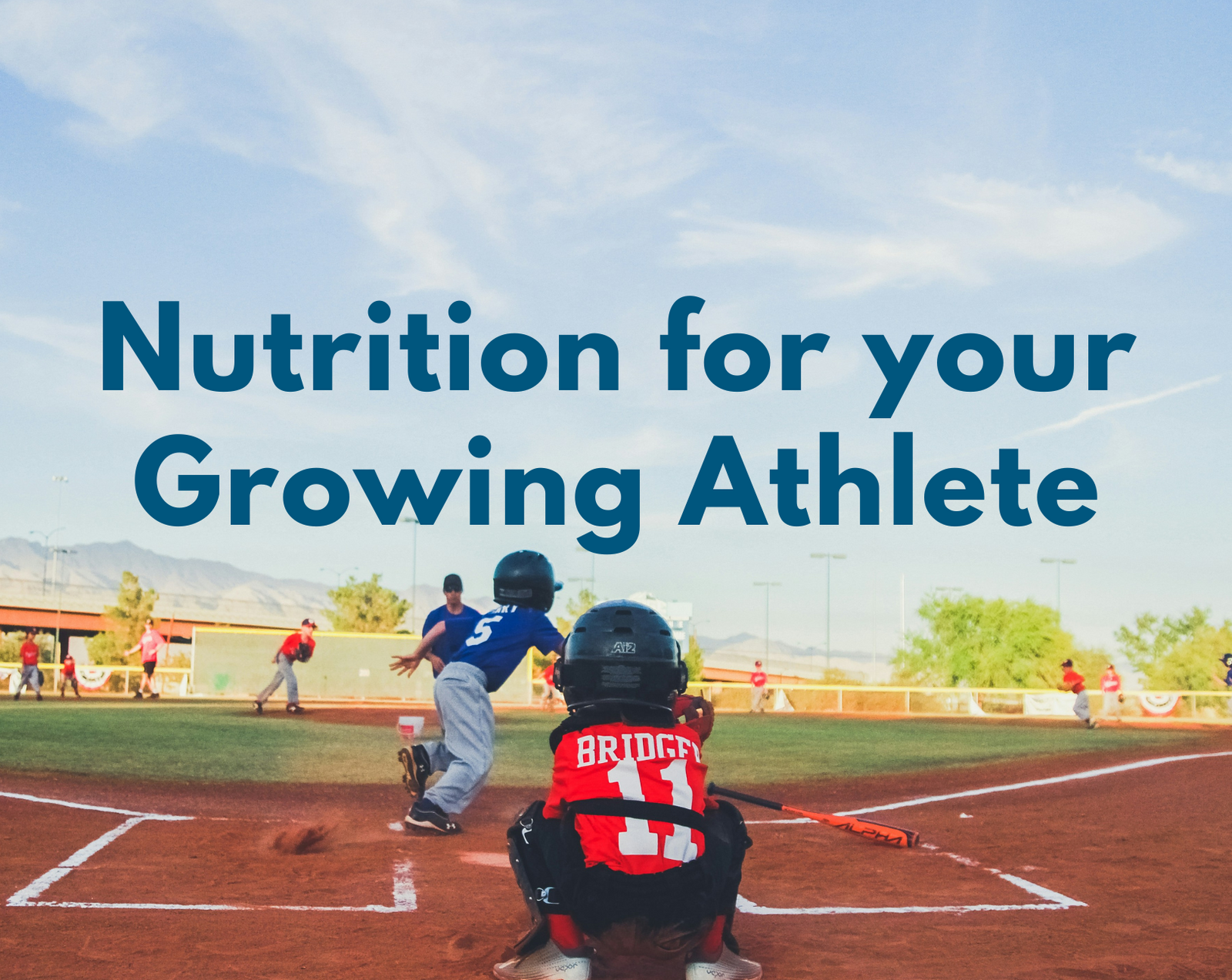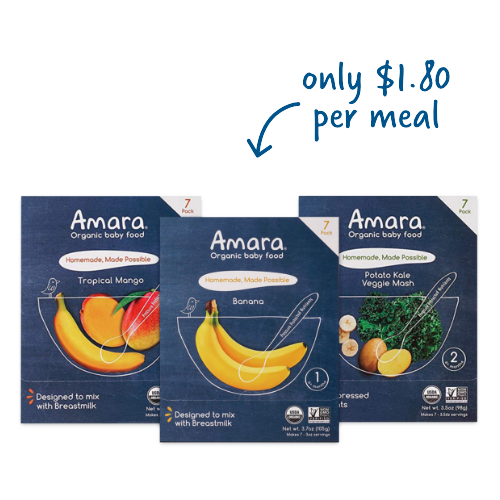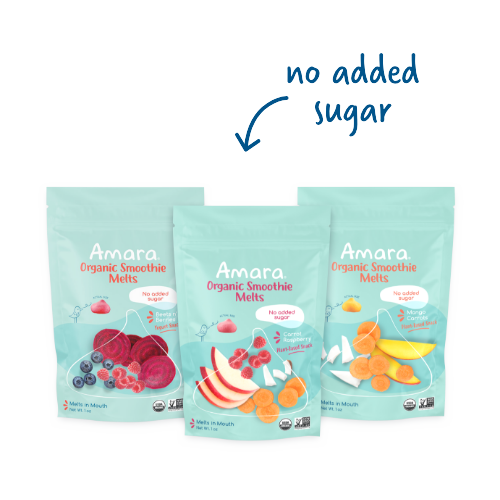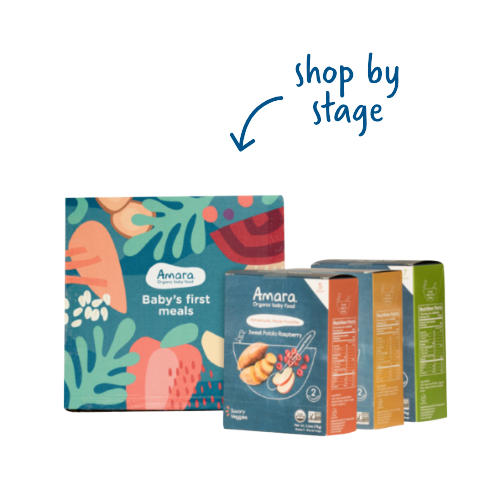
Does my baby need a vitamin D supplement?
We’ve written before about whether toddlers need to take multivitamins (spoiler alert: probably not), but vitamin D is a bit of a thorny issue. We had lots of follow-up questions from parents about why vitamin D is important and whether babies or toddlers need a vitamin D supplement, so we dug in to bring you all the answers.
Keep reading to learn about:
- Why Vitamin D Is Important for Health
- Babies & Vitamin D
- Dietary Vitamin D Sources
- Vitamin D Supplementation

Why Vitamin D Is Important for Health
We’ve learned a lot about vitamin D since it was first named in 1922. Vitamin D is crucial for skeletal health and building strong bones; it helps the body better absorb and store calcium; and some newer research has also suggested vitamin D may be important for gene regulation and even mitigating risk for a range of chronic conditions.
In both the acute and the long-term, not having enough vitamin D is a problem. Many of you may know that severe vitamin D deprivation can lead to rickets. Rickets, a condition in which the bones become soft and weak, is a major health problem on its own, but it can also lead to impaired growth and developmental delays, not to mention other problems like physical deformities, scoliosis, and an increased risk for fractures. Rickets aside, a lack of vitamin D can also lead to poor bone health and a loss of bone mass. These problems can affect anyone — but they can be especially devastating for children whose bodies are still growing and developing.
Good to know:among adults, low vitamin D can also lead to mood problems/changes, including depression.
Okay — so vitamin D is critical for overall health.Where do we get it?
There are three ways our bodies can obtain vitamin D:
- From the sun;
- From food; and
- From supplements.
Let’s discuss the sun first, because that’s where we get about 90% of the vitamin D we use. When we say we “get vitamin D from the sun,” that’s notentirely accurate — instead, what we really mean is that we canmake vitamin D on our skin… but we need sun exposure in order to do it. Sunlight essentially converts a chemical in our skin (a universal form of cholesterol) into an active form of vitamin D that our bodies can use, D3 (if this doesn’t make you want to go watch an episode ofThe Magic School Buswith Ms. Frizzle…).
Sounds pretty cool, right? It is! But the entire process depends on all kinds of variables, so it’s far from universally predictable. In the first place, we obviously need sufficient sun exposure for our bodies to produce the vitamin D we need — something not all of us get all the time. And there are numerous other factors that influence vitamin D production, too: skin color, where you live (namely, how far from the equator you are), what season it is, what time of day it is when you are outside, whether you’re wearing sunscreen/sunblock (more on that in a bit), and what the air quality is like — among other considerations — all play a role in vitamin D production.
We’ll talk more about obtaining vitamin D from food and supplements momentarily, but first let’s look at one group for whom doctors advise againstany sun exposure: babies.

Babies & Vitamin D
Unlike school-age children who tend to spend (more) time outdoors,babies are unlikely to make enough vitamin D on their own. In fact, researchers who study vitamin D levels in babies basically operate under the assumption that babies convert no meaningful amount of vitamin D independently. Partly, this is due to medical recommendations: The American Academy of Pediatrics recommends not exposing infants younger than 6-months-old to direct sunlightand covering their skin with protective hats and clothing when outdoors.
Since babies aren’t able to make the vitamin D they need, that means they need to obtain it elsewhere — from food or supplementation. And although breast milk is the ideal source of food and nutrients for infants, it often does not contain enough vitamin D to meet babies’ needs.
Why, you ask? Well, the amount of vitamin D in breast milk reflects mothers’ individual vitamin D levels; when women have low levels or are deficient (aka lacking in vitamin D), their breast milk will likewise have low levels of vitamin D.
The recommended daily intake of vitamin D for full-term infants is 400 IU (international units).
In recent years and for various reasons, low vitamin D and vitamin D deficiency among women has become increasingly common, and so it is widely accepted that breast milk does not contain sufficient vitamin D to meet infants’ needs. Given the situation, the American Academy of Pediatrics has a blanket recommendation stating thatall breastfed infants take a daily vitamin D supplement (400 IU/day) for the first year of life. Infant vitamin D supplements are usually sold as drops, which are sold in any pharmacy and are super easy to administer.
Interestingly, some doctors go another route and suggest dailymaternalvitamin D supplementation (6400 IU/day) to increase the vitamin D content in breast milk — an intriguing solution that has the benefit of helping both mom and baby — but be sure to speak with your pediatrician about what’s best for you and your baby!
All this^^ applies to breastfed babies, of course — since the Food and Drug Administration requires that infant formula is fortified with vitamin D, formula-fed babies do not typically need any additional vitamin D supplement. (If you are still wading through the ongoing formula crisis, we have a resource to help parents navigate the shortage.)

To summarize:
Alright, moving on to the next source of vitamin D, foods:
Vitamin D & Foods
Diet isnotconsidered a significant source of vitamin D for humans generally (if we recall that we derive90% of the vitamin D we need from the sun, this makes sense, right?) — but it’s especially not for babies. The reasoning is simple: just as babies aren’t exposed to very much sunlight, they also aren’t eating solids until ~6 months, and even after they’ve started to eat complementary solid foods, it’s usually a little while before they’re eating “regularly.” (Though, after the first year, foods can start to play a bigger role in obtaining vitamin D.)
By far and away, the top three most important sources of dietary vitamin D are:
- Fatty fish like salmon, herring, sardines, & canned tuna;
- Fish liver oils (especially cod liver oil); and
- Egg yolks.
I probably don’t need to point out to you that these^^ are not foods many toddlers eat frequently or in great quantities. Some other but less rich natural food sources of vitamin D include mushrooms that were grown with sun exposure, cream and butter, and beef liver derived from animals that consumed vitamin-D rich feed.

Outside of these foods, there are numerous other foods that are typicallyfortified with vitamin D, meaning they have vitamin D added to them. After scientists working in the 1920s made the connection between vitamin D levels and rickets — namely, that a severe lack of vitamin D could lead to rickets — the Food and Drug Administration pushed manufacturers to begin fortifying milk with synthetic vitamin D, and they did. Today, most milk nationwide is fortified with 400 IU vitamin D per quart, and milk is the main vitamin-D-fortified food across the U.S.
Some other foods that are often — though not always — fortified with vitamin D are:
- Packaged breakfast cereals
- Yogurt
- Cheese
- Juice
So we have reviewed sun exposure and food products as sources of vitamin D — this leaves us with the final remaining category: supplements.
Vitamin D Supplementation
The best way to know if it’s best to consider a vitamin D supplement is to speak with your child’s pediatrician… but here are a few points of note on the topic:
Health professionals recommend that infants get 400 IU/day of vitamin D — formula fed babies will obtain this from formula and breastfed babies need a separate supplement.
Fortoddlers 12-24 months of age, the recommendation is 600 IU/day — you can focus on sunlight and dietary sources of vitamin D, but you may want to speak with your doctor about supplementation as well.
Making sure your child gets enough vitamin D can be a tricky proposition — especially because vitamin D levels can vary so greatly with the seasons. It’s a lot easier in spring and summer!
When I learned about vitamin D needs, I worried that sunscreen — the new dogma out of the dermatology office — was a catch-22. But sunscreen — while it does influence vitamin D levels, and can reduce production by 95-99% — doesn’t actually prevent us from getting the baseline vitamin D we, and our children, require. As Dr. Michael A. Levine, Director of the Center for Bone Health at the Children’s Hospital of Philadelphia explains: “in most cases, sunscreen use really does not interfere with getting enough vitamin D.” levels. That’s because most of us don’t reapply as frequently as we’re “supposed to” (guilty) and most of us also don’t have sunscreen on every single second of the day — our kids usually have at least 10-15 minutes (if not much, much more) of sun exposure without sunscreen on any given summer day.
And experts say that “from April through the end of October, spending just 15 to 30 minutes outside in the middle of the day with hands and face exposed will stimulate the skin to make all the vitamin D your child needs. In fact, on a sunny summer day, a child wearing a bathing suit can generate 10,000 to 20,000 IU of vitamin D after 15 to 30 minutes.”
I was fascinated to learn that children can produce more vitamin D with less sun exposure compared to adults — partly because they have a greater surface-area-to-volume ratio and partly because their bodies are just, well, better at making vitamin D — another thing to chalk up to aging, hah! (And BTW, you can’t “OD” on vitamin D synthesized from the sun — good to know!)
Based on the wide variability in sun exposure,many pediatricians favor offering a vitamin D supplement during the fall and winter, when children usually spend less time outdoors and there are fewer hours of daylight.
*Note that if your toddler takes a multivitamin, it may contain vitamin D — be sure to check before offering a separate supplement. While vitamin D toxicity is uncommon, you still want to make sure you are in communication with your pediatrician before offering supplementation that exceeds the daily recommended doses. Nutritional research on vitamins and minerals across the spectrum — not just vitamin D — all indicates that when it comes to supplementation,more is not better. That is, going above and beyond the recommended daily amounts does not yield additive benefits or advantages, and in fact is more likely to be harmful than anything else.
Again, “too much” vitamin D is a rarity for the most part, but here are the upper intake levels (i.e., the levels not to be exceeded) for the pediatric crowd:
- Babies: 1000-1500 IU/day
- Children 1-8 years old: 2500-3000 IU/day
- Children 9+ years old: 4000 IU/day
At the end of the day — if you’re concerned or don’t know if your child is getting adequate vitamin D, you can speak to your pediatrician about your child’s risk-level and ask about vitamin D screening and/or supplementation.
For now, since it’s summer, get outside and soak up those rays! 😎

For all of your outings, day trips, and summer travel, Amara organic foods has you covered. All of our baby food blends and toddler yogurt snacks are made with our patented nutrition protection technology that locks in the taste, texture, and nutrients from fresh, whole foods and leaves additives, sugars, and all the rest at the door — so you always know you’re serving your child the most nutrient-dense meal or snack on the market. Here’s to summer adventures in the sunshine!
References:
Abram SA. Vitamin D in Preterm and Full-Term Infants. Ann Nutr Metab 2020.
Tam ML et al., Vitamin D supplementation for term breastfed infants to prevent vitamin D deficiency and improve bone health. Cochrane review 2020
O’Callaghan KM et al. Vitamin D in Breastfed Infants: Systematic Review of Alternatives to Daily Supplementation. Adv Nutr 2020
Polzonetti V et al. Dietary Intake of Vitamin D from Dairy Products Reduces the Risk of Osteoporosis. Nutrients 2020
Rueter K et al. In “High-Risk” Infants with Sufficient Vitamin D Status at Birth, Infant Vitamin D Supplementation Had No Effect on Allergy Outcomes: A Randomized Controlled Trial. Nutrients 2020
Rosendahl J et al. High-Dose Vitamin D Supplementation Does Not Prevent Allergic Sensitization of Infants.
J Pediatr 2019
Saggese G et al. Vitamin D in pediatric age: consensus of the Italian Pediatric Society and the Italian Society of Preventive and Social Pediatrics, jointly with the Italian Federation of Pediatricians. . Italian Journal of Pediatrics 2018
Verkaik‑Kloosterman J et al. Vitamin D intake of Dutch infants from the combination of (fortified) foods, infant formula, and dietary supplements. Eur J Nutr 2017
Wagner CL & Hollis BW. Early-Life Effects of Vitamin D: A Focus on Pregnancy and Lactation. Ann Nutr Metab 2020
https://www.chop.edu/news/health-tip/vitamin-d-supplements-what-parents-should-know








Leave A Comment